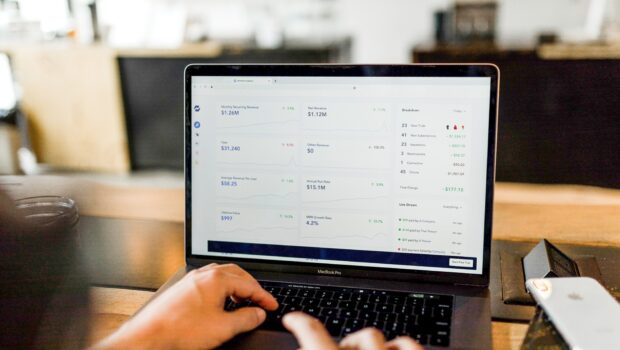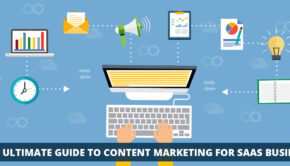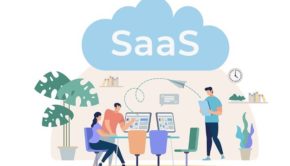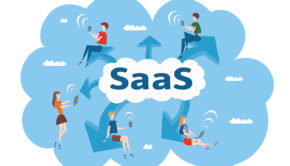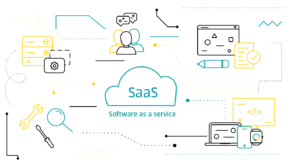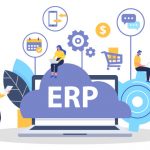Step-By-Step Guide for Successful SaaS Application Development
The process of developing a software system involves various stages such as requirement analysis, design, development, testing, deployment, etc. The step-by-step process where a software idea on paper is transformed into a working piece of software is called the Software Development Lifecycle (SDLC). The development of custom software solutions from scratch entails a similar process where the software system goes from the requirement stage to the final stage of deployment where it is prepared to be released to the intended users.
When it comes to developing SaaS platforms, the development lifecycle takes a different course. This is essentially because SaaS solutions are inherently different from other forms of software systems in nature and thus a SaaS contract negotiation becomes important before deployment. Before we begin with our discussion on the steps involved in the SaaS application development process, let’s first understand what SaaS development is and why SaaS products are different from other software applications.
What is SaaS Development?
Software-as-a-Service refers to cloud-based software solutions that offer a targeted service to users in exchange for a license fee, subscription fee, or some other form of monetisation. It is based on the notion of ‘on-demand software’ and users can access the software via the internet when they require, without having to install and maintain the application on their devices. This is the main reason why SaaS applications are different from other forms of software systems.
To find out more about this topic, see: https://www.goodcore.co.uk/services/product-development/saas-application/.
8 Steps of SaaS Software Development – How to Develop a SaaS Product
Following are the 8 steps you need to take to develop a successful SaaS platform:
1. Market Research Your Product Idea
A product idea is only worth its potential to compete in the market. Therefore, to build a product that succeeds in the market, you must conduct thorough market research. Your goal of this activity is to gather ample information about the market trends, potential customers, competitor products, and leading technologies. They will give you valuable insights into the market conditions that your product will have to face once it is launched. Studying the shortcomings of your competitor’s products in the market will help you have a clearer idea of what features and functionalities you want in your SaaS application to make it truly unique.
At the end of this stage of the SaaS development process, you should have enough information to create a comprehensive product plan containing a list of technical and non-technical specifications.
2. Strategize the Monetisation Plan
With a product plan and a list of specifications, the next step for you is to decide on a monetisation strategy. How will your application earn money? This is the key question that you should answer at this stage. This is a crucial step because your product will be structured around this important detail.
Depending on the type of your SaaS product, you can choose from different revenue models such as subscription fee, in-app advertising, freemium payment model, free trial model, and pay-as-you-grow model. Your choice of monetisation model will define the framework and structure of the product.
3. Select a Cloud Infrastructure
Now, this is the stage where it is advised for you to have a technically sound partner or an advisor who can help you decide, especially if you are not well-versed with the technical aspect of software development. If you have already decided to outsource the development of your product to a SaaS development company, then this is the stage where you might want to begin your collaboration with them.
You need to select a cloud infrastructure provider that is secure, scalable, and capable of serving your future user base. You should pay attention to the encryptions they maintain, and the data security practices they follow. It is advised to only opt for vendors that are reputable and trusted for their services by other SaaS platforms. Your cloud provider will be the backbone of your SaaS application; therefore, this is a decision you should take after careful consideration.
4. MVP Development
Developing a Minimum Viable Product (MVP) is a crucial part of the SaaS application development process. An MVP is not a full-scale product with all the features and functionalities, instead, it is a scaled-back first version of the product that is developed only for the purpose of trial and testing. It is only developed with the basic and core features so that the product can be validated, and the product can be tested out by early adopters.
Most SaaS application development services include the MVP development stage as well. But in case your service provider does not offer MVP development, it is important that you discuss with them beforehand and ensure you develop an MVP before initiating the development of your full-scale product.
5. Product Testing and Modification
The next stage is equally as important as MVP development. This is the stage where you test out your MVP and collect feedback to improve your SaaS solution. You can collect feedback from users directly and find out what they like or dislike about the product and what features they would want to have included. This will help you modify your product so that it fits the needs of the users.
6. Development of the final product
At this stage of the SaaS product development process, you initiate the development of the final version of your product. Using the feedback gathered by your MVP you can start building your final product by adding more features and functionalities to the MVP. You work closely with your development team at this stage while they start coding your application using programming languages and frameworks. Since this is the most time-consuming stage of the entire process, it is helpful if you divide the development work into smaller deliverables and keep track of the progress of the development team throughout.
7. Marketing and Promotion
Marketing is an important step that often takes place alongside the development of your final product. While the development team is working on developing the final product, you can begin promoting the application to build a community of followers. This way when your product is launched in the market, you will have a group of fans and potential customers waiting for it.
8. Launch of the SaaS product and Post-Launch Maintenance
After thorough quality assurance testing, your SaaS application is ready to be released to the market. Once it is launched, it will be available to users and you can conduct user acceptance testing to verify the performance quality of your application.
The SaaS product development lifecycle does not end here, as you are required to provide ongoing support and maintenance by updating your application and resolving tech support issues.
This concludes the SaaS app development process. We hope this guide will help you along your product development journey.
Cover Image Credit Freepik

